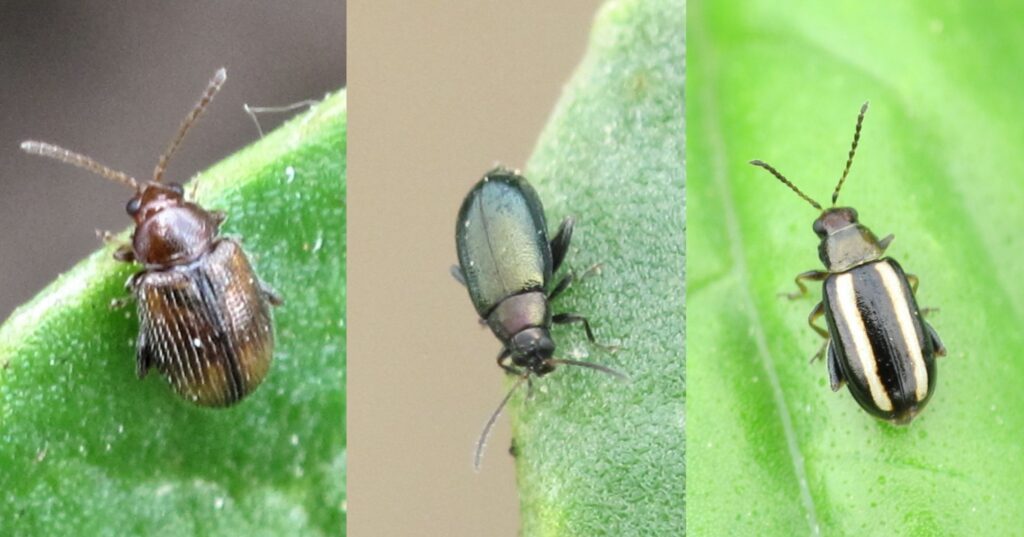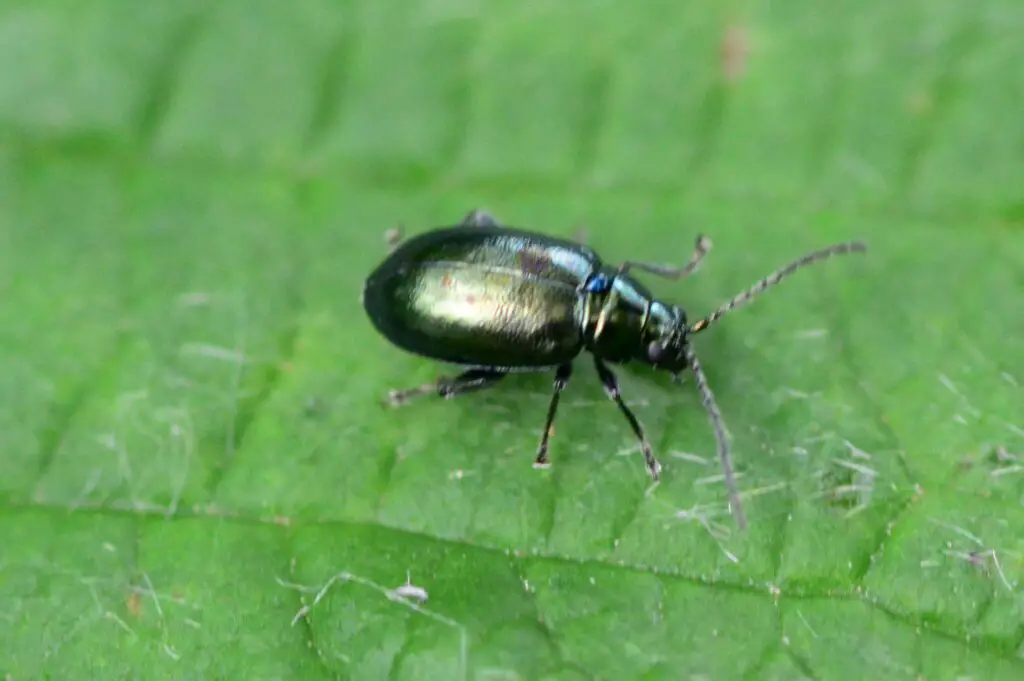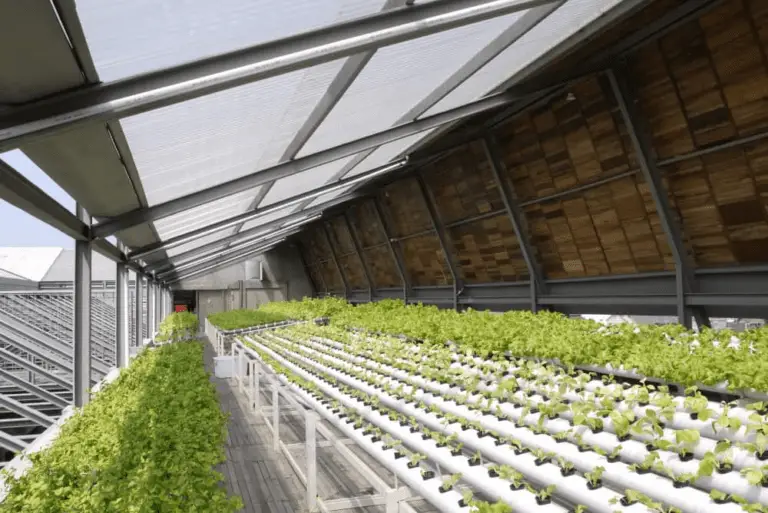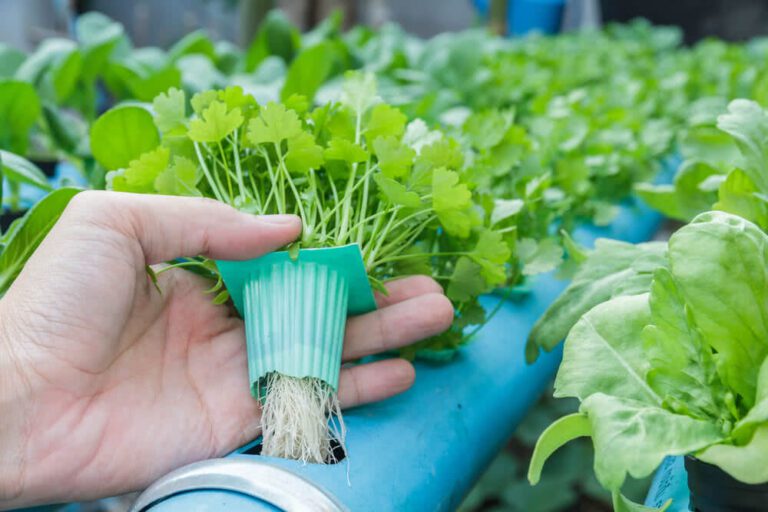Flea Beetle Control: Best Way to Wipe Out These Pests in 1st Stage
Table of Contents
Understanding the Flea Beetle: Identifying the Pest Threatening Your Garden

Flea beetles (Family Chrysomelidae) are a common pest that can wreak havoc on your garden, threatening the health of your plants. These tiny beetles, measuring less than a quarter of an inch in length, are known for their ability to jump like fleas when disturbed, giving them their name. Despite their small size, they can have a significant impact on your garden’s overall productivity.
Identifying flea beetles can be challenging, as there are several species that vary in color and behavior. However, most flea beetles are similar in appearance, with metallic shiny bodies ranging from black or bronze to blue-green. They are typically wedge-shaped, with large, powerful hind legs that allow them to jump quickly and efficiently. While feeding, these pests leave distinctive tiny holes on the leaves of plants, giving them a shot-hole appearance. Additionally, flea beetles are often attracted to specific plants, such as eggplants, potatoes, tomatoes, radishes, and various members of the cabbage family.
The Lifecycle of Flea Beetles: Key Insights for Effective Control Measures
Understanding the lifecycle of flea beetles is crucial for implementing effective control measures in your garden. These small, hopping insects can cause significant damage to a wide range of plants, making it necessary to adopt proactive strategies to mitigate their impact.
The lifecycle of flea beetles consists of four main stages: egg, larva, pupa, and adult. Adult fleas emerge from the soil in early spring, typically between April and May, and start feeding on tender plant foliage. Female beetles lay their eggs in the soil near the base of host plants, and these eggs hatch into larvae within a week. The larvae then feed on the roots of plants for about two to three weeks before pupating in the soil. After a pupal stage that lasts approximately two weeks, new adults emerge and continue the cycle by feeding and laying eggs.
By understanding the lifecycle of flea beetles, you can target specific stages for control measures. For instance, focusing on preventing egg-laying or targeting larvae in the soil can disrupt their population growth. Implementing strategies like crop rotation, using physical barriers, or introducing beneficial insects can be effective in reducing flea beetle populations and preventing their damage to your garden plants. Stay tuned for further insights on different control measures and management techniques to combat flea beetle infestations effectively.
Signs of Flea Beetle Infestation: Recognizing the Damage and Act Promptly
Flea beetles can cause significant damage to plants in the garden, so it’s crucial to be able to recognize the signs of their infestation early on. One of the most common indications of a flea beetle infestation is small, rounded holes in the leaves of your plants. These holes are typically about the size of a pinprick, but as the infestation progresses, they may grow larger and become irregular in shape. Another telltale sign is the presence of shiny, bronze or black beetle adults on the leaves. These beetles are small, usually measuring only 1/10 to 1/4 inch in length. Additionally, if you notice a loss of vigor in your plants, wilting, or stunted growth, it could be a sign of flea beetle feeding.
Taking prompt action is essential in managing flea beetle infestations. Once you have identified the damage caused by flea beetles, it’s important to implement control measures immediately to prevent further harm to your plants. By taking swift action, you can minimize the impact of these pests on your garden and protect your plants from further damage. It’s also crucial to continually monitor your plants for signs of infestation throughout the growing season, as early detection and intervention are key to effectively managing flea beetles.
Natural Approaches to Flea Beetle Control: Safe and Environmentally Friendly Solutions
When it comes to tackling flea beetle infestations in your garden, natural approaches can offer safe and environmentally friendly solutions. By utilizing these methods, you can effectively control flea beetles without resorting to harsh chemicals that could harm beneficial insects or pose risks to human health.
One natural approach to flea beetle control is the use of insect-repellent plants. Certain plants, such as catnip, tansy, and basil, have been found to naturally repel flea beetles. Introducing these companion plants in your garden can help deter these pests from infesting your crops. Additionally, intercropping your vegetable plants with flowers like marigolds and nasturtiums can further enhance pest resistance, as the strong scents emitted by these blooms repel flea beetles.
Another natural method to consider is the use of biological controls. Beneficial insects such as ladybugs and lacewings are natural predators of flea beetles. By attracting these beneficial insects to your garden through the use of specific flowering plants, you can create a balanced ecosystem where these predators keep flea beetle populations in check. Additionally, using insecticides derived from naturally occurring substances like neem oil or pyrethrin can help control flea beetles without causing harm to other beneficial insects.
Cultural Practices for Preventing Flea Beetle Infestation: Tips for Garden Maintenance

Cultural practices play a crucial role in preventing flea beetle infestation and maintaining a healthy garden. By implementing certain techniques, you can create an environment that is less attractive to these persistent pests. Firstly, practicing good garden hygiene is essential. Remove any plant debris, weeds, or fallen leaves regularly, as flea beetles tend to seek shelter in these areas. Additionally, keeping your garden clean and free from excessive moisture can discourage flea beetle activity.
Furthermore, crop rotation is an effective cultural practice that can help minimize the risk of flea beetle infestations. These pests have specific host plants that they prefer, so rotating susceptible plants with non-host plants can disrupt their life cycle and reduce population levels. Consider grouping crops based on their susceptibility to flea beetles and rotate them yearly to avoid consecutive infestations. Additionally, diversifying your garden by planting a variety of different vegetables and herbs can help deter flea beetles, as they may be less attracted to a mixed environment.
Incorporating these cultural practices into your garden maintenance routine can significantly reduce the risk of flea beetle infestations. By maintaining a clean and tidy garden while implementing crop rotation and diversification, you create an environment that is less favorable to these troublesome pests. However, it’s important to remember that cultural practices alone may not be sufficient for complete control, especially in cases of severe infestations. Hence, a comprehensive approach that combines various strategies may be necessary for effective flea beetle management.
Introducing Beneficial Insects: Biological Control Methods against Flea Beetles
Beneficial insects play a crucial role in controlling flea beetle populations in gardens and agricultural settings. These insects are natural predators of flea beetles, making them an effective and environmentally friendly solution for managing infestations. Ladybugs, lacewings, and ground beetles are among the beneficial insects that feed on flea beetles and their eggs, helping to reduce their numbers and prevent further damage to plants.
Ladybugs, also known as ladybird beetles, are perhaps the most recognized beneficial insects in the garden. They have a voracious appetite for flea beetles and can consume a large number of them in a short period, making them valuable allies in the fight against these pests. Lacewings, on the other hand, feed on both flea beetle adults and their larvae. Their larvae, commonly referred to as “aphid lions,” have a serrated mandible that they use to puncture their prey, making them efficient predators. Ground beetles are nocturnal insects that actively hunt for flea beetles and other insect pests during the night. They are one of the most effective natural controls for flea beetles in gardens and agricultural fields.
Introducing beneficial insects into your garden can be done in several ways. You can attract them naturally by planting flowers that serve as nectar sources, as well as by creating habitats such as hedgerows and insect hotels. Alternatively, you can purchase and release these beneficial insects from reputable suppliers. However, it is important to ensure that the release is done at the appropriate time and under suitable environmental conditions to maximize their impact. By utilizing these biological control methods, you can harness the power of nature to combat flea beetles and protect your plants from their destructive feeding habits.
Companion Planting Strategies: Utilizing Natural Deterrents for Flea Beetle Management
Companion planting is a valuable strategy for managing flea beetles in your garden. By strategically selecting plants that act as natural deterrents, you can help protect your crops from these pesky pests. One effective companion plant to consider is garlic, which is known for its strong odor that repels many insect pests, including flea beetles. Planting garlic around your vulnerable crops can create a barrier that discourages flea beetles from approaching.
Another beneficial companion plant is catnip, which not only acts as a repellent but also attracts beneficial insects such as ladybugs and lacewings that feed on flea beetles. These predatory insects can help keep the flea beetle population in check, providing natural pest control for your garden. Additionally, catnip has been found to emit certain chemicals that repel flea beetles and other pests, making it a valuable asset in companion planting.
Physical Barriers and Exclusion Techniques: Creating Shields to Protect Your Plants
Physical barriers and exclusion techniques are effective strategies for protecting your plants from flea beetle infestations. By creating shields around your garden, you can prevent these pests from accessing your precious crops and causing extensive damage. Using physical barriers such as netting, screens, or row covers can create a physical barrier that denies the entry of flea beetles into your garden.
Row covers, made from fine mesh material, are particularly useful in preventing flea beetles from wreaking havoc on your plants. These covers are placed directly over the plants, creating a physical barrier that keeps the beetles at bay while still allowing light, air, and water to reach your plants. The tightly woven mesh of the row covers acts as a shield, preventing flea beetles from reaching the plants and laying their eggs.
Additionally, the use of sticky traps can further enhance the effectiveness of physical barriers. Placing these traps near your plants will attract and catch adult flea beetles, significantly reducing their population. The combination of physical barriers and sticky traps creates a double-layered defense system that provides enhanced protection for your plants.
By implementing these physical barriers and exclusion techniques, you can significantly reduce the risk of flea beetle infestations in your garden. These preventive measures not only shield your plants from these destructive pests but also minimize the need for chemical interventions, ensuring environmental sustainability and the health of your garden.
Organic Insecticides: Targeted Treatments to Combat Flea Beetle Infestations

Organic insecticides offer an effective and targeted approach to combat flea beetle infestations in your garden. These natural treatments are derived from botanical sources and are formulated to specifically target flea beetle Control while minimizing harm to beneficial insects and the environment. By incorporating organic insecticides into your pest management strategy, you can effectively control flea beetle Control populations and protect the health of your plants.
One popular organic insecticide option for flea beetle control is neem oil. Extracted from the seeds of the neem tree (Azadirachta indica), neem oil has been used for centuries in traditional farming practices. It works by disrupting the feeding and reproductive cycles of flea beetle Control, leading to their eventual decline. Neem oil also has residual activity, providing ongoing protection against future infestations. To use neem oil, mix it with water according to the instructions on the product label and apply it to your plants using a sprayer. Repeat the application every one to two weeks or as recommended by the manufacturer.
Another organic insecticide that has shown effectiveness against flea beetles is pyrethrin. Derived from the flowers of certain chrysanthemum species, pyrethrin works by attacking the nervous system of pests upon contact. It provides quick knockdown and control of flea beetles, making it an ideal choice for immediate and targeted treatment. Pyrethrin-based insecticides are available in various formulations, including sprays and dusts. Whichever form you choose, make sure to follow the instructions provided by the manufacturer to ensure safe and effective application.
Effective Crop Rotation: Disrupting Flea Beetle Control Populations and Minimizing Damage
Effective crop rotation is a key strategy for disrupting flea beetle populations and minimizing damage in your garden. By strategically rotating your crops, you can break the beetle’s lifecycle and reduce their impact on your plants.
Flea beetles can be devastating to many garden crops, including tomatoes, eggplants, and potatoes. These tiny insects feed on the leaves, stems, and fruits of plants, causing foliar damage and stunting growth. However, by implementing a well-planned crop rotation system, you can effectively manage flea beetle populations and protect your crops.
Crop rotation works by altering the planting locations of susceptible crops from one season to the next. This practice disrupts the beetles’ feeding patterns, as they have to search for their preferred host plants. By the time the new crop is planted, the flea beetles may have moved on or declined in numbers, reducing the risk of infestation. Additionally, rotating crops can help improve soil health, nutrient balance, and overall plant resilience, further enhancing their ability to withstand flea beetle damage.
Soil Health and Nutrient Management: Strengthening Plant Resistance to Flea Beetle Control
Soil health and nutrient management play a crucial role in strengthening plant resistance to flea beetles. By optimizing soil conditions and providing the appropriate nutrients, gardeners can create an environment that promotes healthy plant growth and enhances the plants’ natural defenses against flea beetles.
One key aspect of soil health management is ensuring proper nutrient availability. Essential nutrients such as nitrogen, phosphorus, and potassium are vital for the overall growth and development of plants. Adequate levels of these nutrients can enhance the plant’s ability to withstand flea beetle infestations. Regular soil testing can help determine nutrient deficiencies and allow gardeners to make targeted amendments to improve soil fertility.
In addition to nutrient availability, maintaining a balanced soil pH is also crucial. Flea beetles tend to thrive in acidic soils with a pH below 6. To discourage their population growth, it is important to maintain a pH level that is optimal for your specific plants. Adding organic matter, such as compost or well-rotted manure, can help increase soil pH and improve its overall structure.
Alongside nutrient management, proper soil drainage is essential for preventing flea beetle infestations. These pests prefer moist soil conditions, so ensuring adequate drainage helps deter their presence. Incorporating organic matter into the soil can help improve its water-holding capacity and prevent excessive moisture buildup, reducing the favorable conditions for flea beetles.
By focusing on soil health and nutrient management, gardeners can create an environment that supports plant resilience and minimizes the susceptibility to flea beetle infestations. Implementing regular soil testing, maintaining optimal nutrient levels and pH, and improving soil drainage are vital steps in strengthening the natural defenses of plants against these garden pests.
Monitoring and Early Detection: Tools and Techniques for Timely Intervention
Monitoring and early detection of flea beetle infestations are crucial for gardeners to take prompt action and minimize potential damage to their plants. Fortunately, there are several tools and techniques available to help in this process. One effective tool is the use of yellow sticky traps, which can be strategically placed throughout the garden. These traps attract adult flea beetles with their bright color, causing them to get stuck upon contact. Regularly inspecting these traps can provide valuable information about the presence and population of flea beetles in the garden.
In addition to sticky traps, visual inspections of plants should be conducted regularly. Gardeners should carefully examine the leaves, stems, and buds for any signs of flea beetle feeding or larvae presence. These pests typically leave small round holes or pits on the upper surface of the leaves, giving plants a characteristic “shot-hole” appearance. Additionally, flea beetle larvae can often be found feeding on the roots or underground parts of plants. By staying vigilant and conducting thorough visual inspections, gardeners can detect flea beetle activity early on and take immediate action to address the infestation.
Integrated Pest Management: Developing a Comprehensive Approach to Flea Beetle Control
![Flea Beetle Control: How to Get Rid of Flea Beetles [4 Easy Steps!]](http://southelmontehydroponics.com/wp-content/uploads/2024/01/how-to-get-rid-of-flea-beetles-4-1024x576.jpg)
Integrated Pest Management (IPM) offers a comprehensive and effective approach to controlling flea beetle infestations. By combining various pest management strategies, gardeners can minimize the damage caused by these pests while minimizing the use of chemical insecticides. One of the key principles of IPM is understanding the life cycle and behavior of the flea beetle, which enables gardeners to implement targeted control measures at the most vulnerable stages of their development.
Crop rotation is an important component of IPM for flea beetle control. By regularly alternating the location of susceptible plants, gardeners can disrupt the life cycle of flea beetles and reduce their populations. Additionally, planting trap crops, such as radishes or mustard greens, can draw flea beetles away from valuable plants, serving as a sacrificial alternative food source. This method helps to protect the main crops from significant damage. By employing these cultural practices in conjunction with other IPM strategies, gardeners can develop a comprehensive and sustainable approach to flea beetle control.
• Crop rotation disrupts the life cycle of flea beetles and reduces their populations
• Planting trap crops like radishes or mustard greens draws flea beetles away from valuable plants
• Trap crops serve as sacrificial alternative food sources, protecting main crops from significant damage
• Combining cultural practices with other IPM strategies creates a comprehensive and sustainable approach to flea beetle control
Here’s a simple table about Flea Beetle Control:
| Feature | Description |
|---|---|
| Name | Flea Beetle |
| Scientific Name | Various species within the family Chrysomelidae |
| Size | Typically 1-4 mm in length |
| Color | Varies; often metallic or brightly colored |
| Habitat | Found in gardens, farms, and various crops |
| Diet | Feeds on plant leaves, especially cruciferous |
| Damage | Causes small holes in leaves, known as “shot-hole” damage |
| Lifecycle | Complete metamorphosis (egg, larva, pupa, adult) |
| Behavior | Jumps when disturbed, resembling fleas |
| Life Span | 2-3 months, varying by species |
| Economic Impact | Can be a pest in agriculture, affecting crop yields |
| Natural Enemies | Predatory insects, birds, spiders |
| Control Methods | Insecticides, natural predators, cultural practices |
| Notable Species | Crucifer Flea Beetle, Potato Flea Beetle, Striped Flea Beetle |
| Distribution | Found worldwide, with numerous species adapted to specific regions |
| Special Characteristics | Strong hind legs for jumping, specialized feeding structures on mouthparts |
Please note that the information provided is general, and specific details may vary depending on the particular species of flea beetle.
Consultation with Pest Control Professionals: Flea beetle Control Seeking Expert Advice for Severe
Consultation with pest control professionals is crucial when dealing with severe flea beetle infestations. These knowledgeable experts have extensive experience in identifying, assessing, and effectively controlling pest populations in gardens and agricultural settings. By seeking their advice, gardeners can gain valuable insights into the specific challenges posed by flea beetles and develop tailored strategies to combat them.
The expertise of pest control professionals allows for a comprehensive assessment of the severity of the infestation and its potential impact on plants. Through careful observation and analysis, these experts can determine the most appropriate control methods based on the specific circumstances. They can guide the use of targeted organic insecticides, cultural practices to prevent infestations, and the implementation of physical barriers and exclusion techniques. By leveraging their expertise, gardeners can take proactive measures to mitigate the damage caused by flea beetles and protect the health of their plants.
How can I identify a flea beetle Control infestation in my garden?
Signs of flea beetle Control infestation include small holes in leaves, skeletonized leaves, and sudden wilting of plants.
Are there any natural methods to flea beetle Control?
Yes, natural approaches such as introducing beneficial insects, companion planting, and cultural practices can help control flea beetle Control.
What are some cultural practices that can prevent flea beetle Control infestation?
Maintaining proper garden hygiene, removing crop debris, and using floating row covers are some cultural practices that can prevent flea beetle Control infestation.
Can companion planting be effective in managing flea beetle Control?
Yes, certain companion plants like garlic, onions, and marigolds can act as natural deterrents against flea beetles.
What are some physical barriers and exclusion techniques to protect plants from flea beetle Control?
Using floating row covers, applying sticky traps, and creating physical barriers with netting can help protect plants from flea beetles.
Are there any organic insecticides that specifically target flea beetle Control?
Yes, organic insecticides containing ingredients like pyrethrin or neem oil can be used to target and control flea beetle infestations.
How can crop rotation help in minimizing flea beetle Control damage?
By rotating susceptible plants with less vulnerable ones, you can disrupt flea beetle populations and reduce the extent of damage they cause.
What role does soil health and nutrient management play in strengthening plant resistance to flea beetle Control?
Well-nourished and healthy plants are more resistant to flea beetle damage. Maintaining proper soil health and providing adequate nutrients can help in strengthening plant resistance.
What tools and techniques can be used for monitoring and early detection of flea beetle Control?
Inspecting plants regularly, using sticky traps, and setting up pheromone traps are effective tools for monitoring and detecting flea beetle activity early on.
What is integrated pest management (IPM) and how can it be applied to control flea beetle Control?
Integrated pest management involves using a combination of preventive measures, monitoring, and targeted treatments to control pests like flea beetles in a comprehensive and sustainable manner.
When should I consult a pest control professional for severe flea beetle Control infestations?
It is advisable to consult a pest control professional when flea beetle infestations become severe and other control methods have not been effective in managing the problem.

![Flea Beetle Control: How to Get Rid of Flea Beetles [4 Easy Steps!]](https://southelmontehydroponics.com/wp-content/uploads/2024/01/how-to-get-rid-of-flea-beetles-4.jpg)





